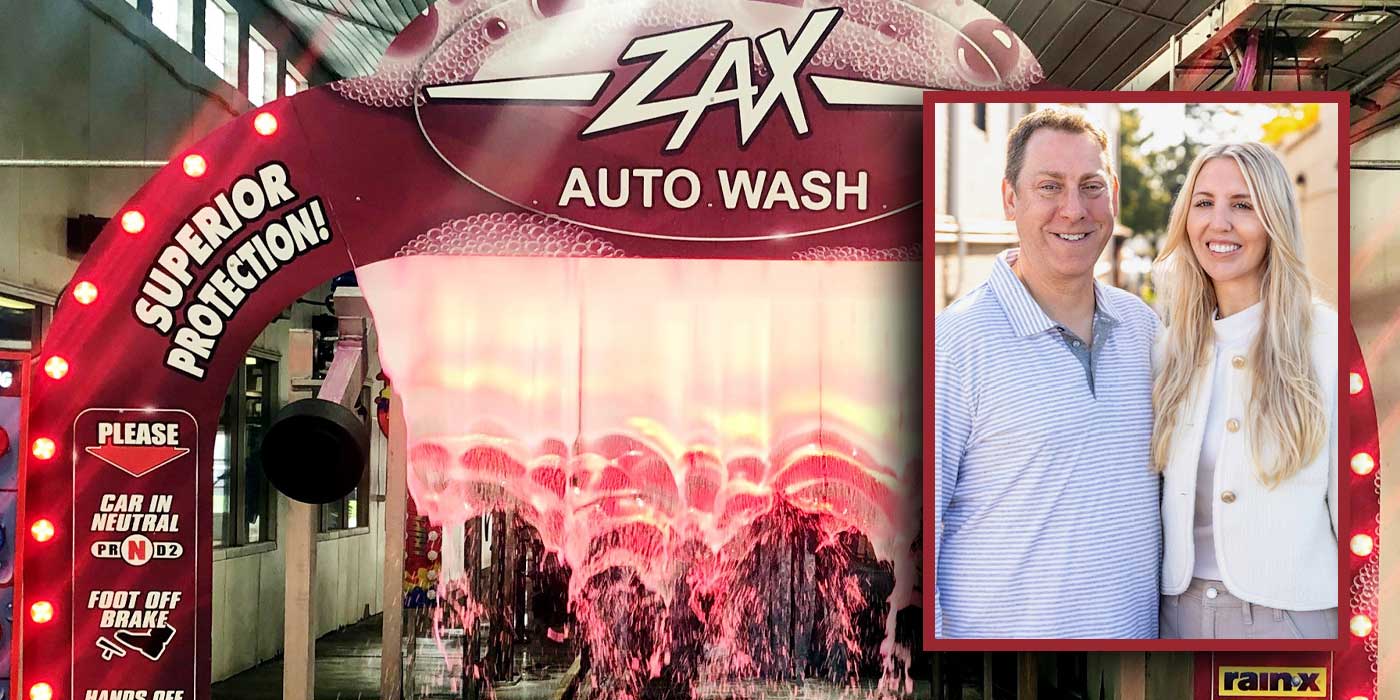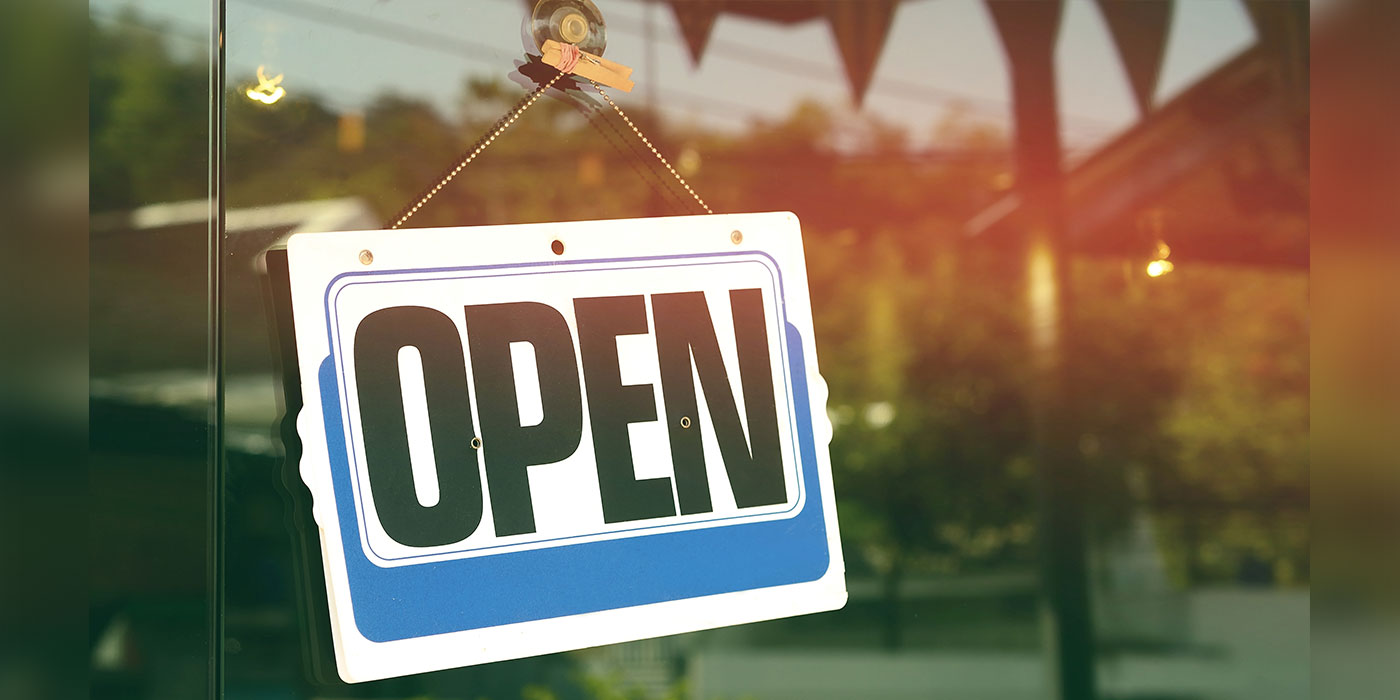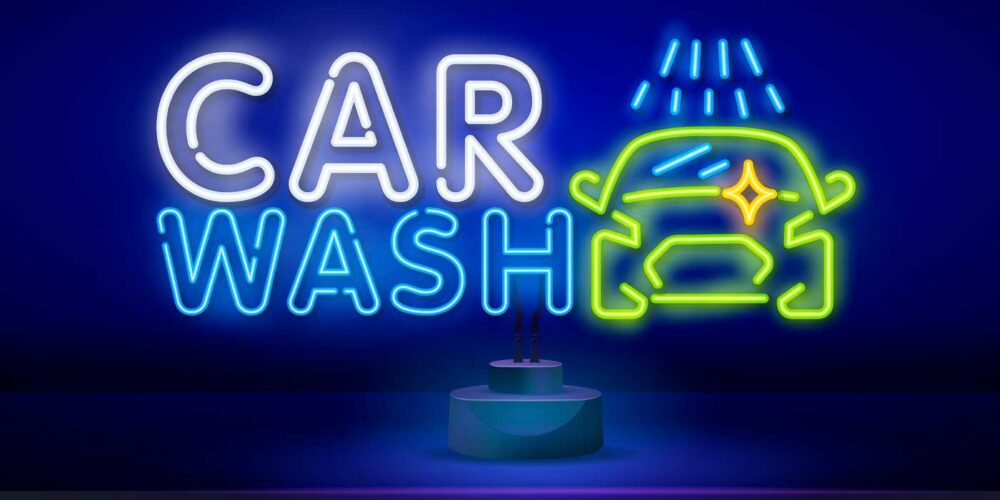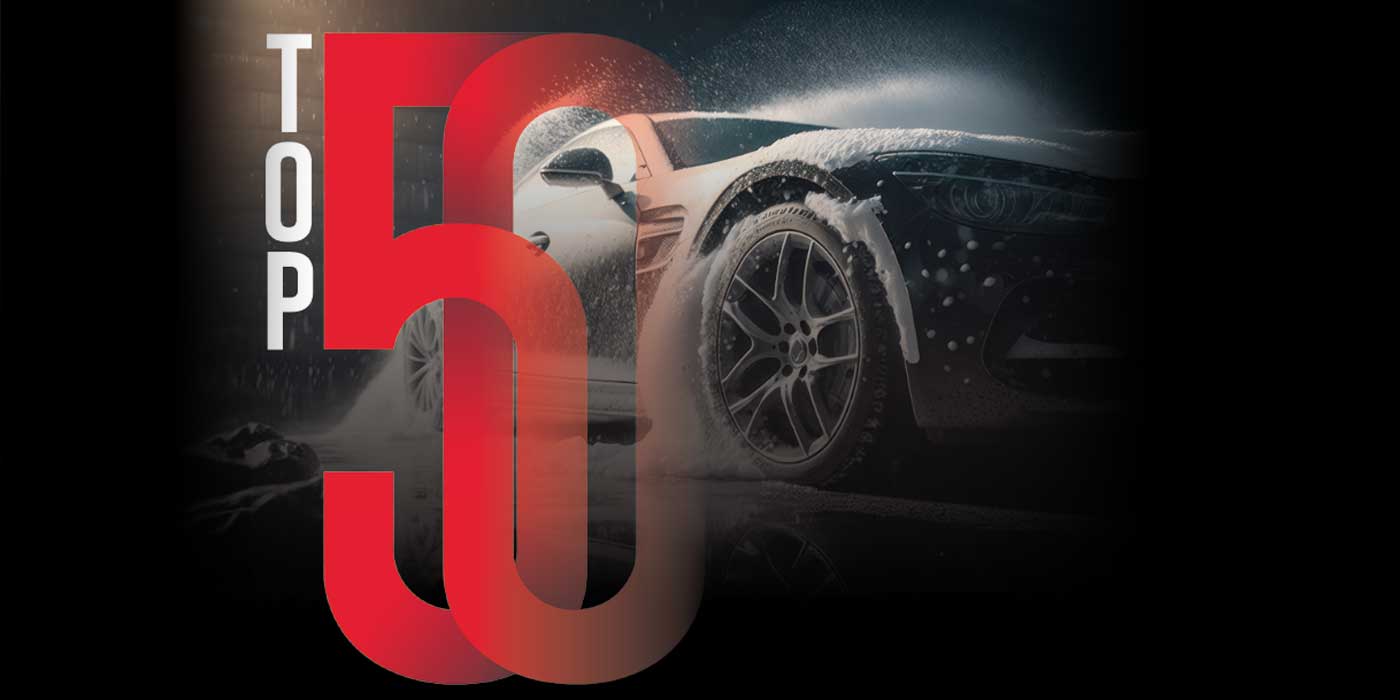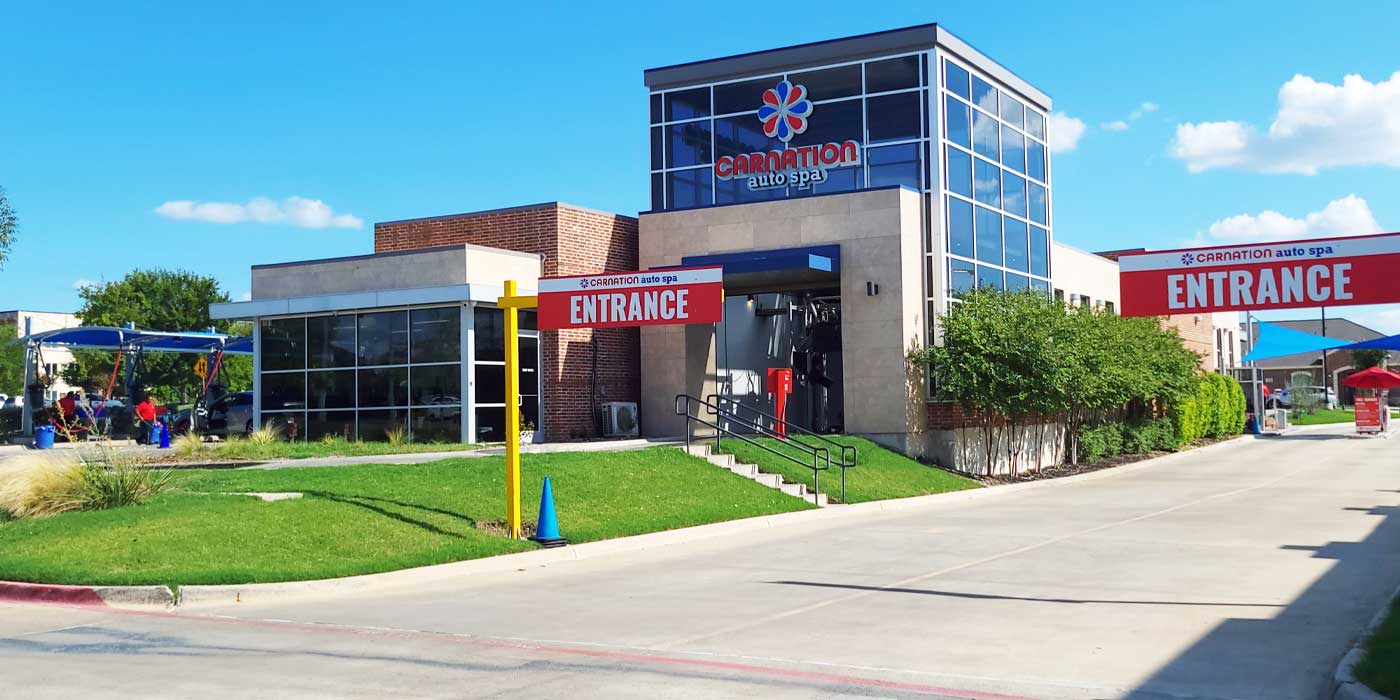My objective in this article is to define a type of flex-serve carwash that I will call an “automated flex-serve” (AFS) carwash. However, it is helpful to first understand the context in which I make this definition.
The term “flex-serve carwash” is a very often used and misunderstood term. The reason I believe that this is true is that in the highly fragmented carwash industry it is often difficult to form a consensus on any term that contains a certain degree of ambiguity. Of course, everyone, me included, is absolutely certain that he or she does understand the term “flex serve.” The following description may not be the definition, but is offered as at least a starting point for discussion.
Definition
An automated flex-serve conveyor carwash is an exterior express carwash with a designated aftercare area where full-serve and express detail services can be performed after a customer exits the carwash tunnel. What follows is a description of each of the elements of this model of carwash.
I. Entrance
In an AFS, the greeting is performed by an automatic pay station. The pay station might be manned by an attendant during the opening months to teach customers how to use it, and may also be manned during busy times to increase the throughput of the carwash. Essentially, it is set up as an unmanned function, and whenever someone is out there at any time they’re not really selling but training and answering questions from customers.
A simple menu selection might be the following:
A) Exterior:
$5 (soap and water)
$7 (undercarriage wash, sealer, clear coat, rim cleaner)
$10 (all on-line services)
B) Full serve:
$17 (inside and out, undercarriage wash, clear coat protectant)
$20 (inside and out, and all on-the-line services)
C) Express Detail:
$45 (express polish, interior superclean, carpet express, seat express)
Any of the above options are purchased at the pay station.
II. In the tunnel
No matter what level of service, all customers drive their vehicles through the tunnel. Unlike a traditional full service, customers do not get out and have their vehicles driven through the tunnel by an attendant. In fact, ideally, a flex serve should be set up so that vehicles are never moved by an attendant but only by the customers themselves in every phase of the operation.
III. Exiting the tunnel
When exiting the tunnel, customers either leave the property or pull into the free vacuum area just like at an express exterior carwash. In addition, at an AFS the customer has the option if they have purchased a full-service carwash or an express detail to pull into an aftercare service area.
IV. After care area
A) Full service
There are two parts of the aftercare area. The first part is the area for the full-service carwash to be performed. This full-serve aftercare cleaning is comprised of vacuuming the vehicle front, back and rear cargo area of an SUV, cleaning the windows inside, removing dust and light surface dirt with a damp towel from the dash and center console, and physically drying down the outside of the vehicle. This service takes approximately five minutes for a two-person team.
This full-serve aftercare area can either be in an open space, under a pull-through canopy, or in an enclosed pull-in, back-out space similar to the free vacuum areas. The size and dimensions of the property, projected volume, and operator preferences will determine the exact layout. A pull-through canopy is usually the most desirable format for the full-service area.
B) Express detail
In the northern half of the country, the ideal format to have a successful year-round express detail business is to have an enclosed space of some type. If the enclosed areas can be a pull-through system (i.e., enter in one door and exit through another door like an express oil change), that is ideal. However, most of the time, space considerations will create a pull-in back-out detail area.
The reason that an enclosed space is required in the northern climates is that it is difficult (not impossible) to perform express detail services to a high level of quality in outside conditions in the winter months. There are carwashes that do it in colder climates; however, in winter it is a challenge to produce a quality service consistently. These express detail services take approximately 15 to 20 minutes each with a two-person team.
C) Automated aftercare
The ideal format from an operator perspective is to have the full-service and express detail services performed on an automated belt system. In a northern climate, the belt system would have to be totally under roof and would require one belt for detail and at least one, preferably two, belts for the full-service wash. However, the land, building size, and construction costs of these facilities are only justified if extremely large volumes of aftercare services are anticipated.
Although a wonderful type of facility to operate, these systems will not usually justify the return on investment in most situations. A few very successful operators with high volume full-service skills have erected these types of facilities and most have met with great success. However, it is a high risk situation for most operators, and this configuration is very rare at this point in time in the United States.
V. Revenue potential
A) Exterior Express
If anyone is attempting to build or own an exterior express carwash (regular size, not a mini tunnel) the minimum objective is usually 100,000 cars a year. If the pricing is $5, $7, and $10, the average dollar per car should be around $6.50 a car. The base revenue for the carwash then would be $650,000.
B) Full-service
The percentage of customers buying full service at an exterior express carwash can be anywhere from 10 percent to 30 percent and will vary somewhat according to season, pricing, and physical capacity. The percentage will usually be less during the winter months especially in northern climates.
16 percent is a good average to use statistically across the board. The $18.50 per car average revenue with the full-service segment is also statistically valid, based on what other AFS carwashes have performed historically.
If the carwash is washing 100,000 exterior cars a year, 16,000 could be expected to spend at least $18.50 per car with revenue totaling $296,000.
C) Express detail
The tendency is for express detail to begin slowly at an AFS carwash and begin as low as 1.5 percent to 2 percent and build to 4 percent or 5 percent over a few years.
Using 4 percent as a statistically solid number at the volume maturity level, at $45 per service, the revenue would be $180,000 for 100,000 cars.
The potential revenue for the entire aftercare area is $476,000 on an AFS washing 100,000 exterior express cars per year.
D) Loss of revenue
If 20 percent of the exterior express customers are converted to purchasing a higher level of service, then obviously it will not be purchasing the exterior express offering. Therefore, in the hundred thousand car example, 20,000 cars x $6.50 a car or $130,000 must be deducted from the exterior express revenue of $650,000. So, the express exterior revenue would then be $520,000 a year.
VI. Cost considerations
A) Employees
The additional employees to run the aftercare area will cost anywhere from $100,000 to $150,000, depending on the skill of the operator in managing the HR costs. A reasonable estimate would be $125,000.
B) Management
The level of management required to run the flex-serve operation will cost at a minimum $10,000 to $15,000 more in wages. In addition, there will need to be some more highly paid hourly supervisors in the aftercare area that will add another $5,000 to $10,000 in pay. A reasonable estimate would be another $20,000 in this area.
C) After Care Costs of Goods
Spending $1 per car for chemicals, towels, supplies, and equipment repair and replacement will add another $20,000 in costs.
D) Total Costs
Take $125,000 + $20,000 + $20,000 and that equals $165,000 in costs. This $165,000 deducted from $476,000 nets a gross profit of $310,000 in the aftercare area. This assumes, of course, that the aftercare area is being treated as incremental revenue over and above the revenue coming in from the exterior express portion of the business. And, it also has to be factored in that the exterior express revenue has been reduced by the conversion of 20 percent of the exterior customers to the aftercare purchases.
So, what’s wrong with this concept?
There are two major problems with the above scenarios and these problems are so significant that they will cause most exterior express operators and full-serve operators not to become flex serves.
Most exterior express operators have come from outside the industry. One of the major attractions to them of the express exterior carwash concept has been the low number of employees. The thought of increasing their number of employees significantly, as well as taking on the management of the much more difficult tasks of the aftercare services, is something that will not happen unless an operator is forced to do it because of increased competition.
The second major problem is why most full-service operators, even ones who consider themselves flex-serve now, will probably not go to an all automated format. They would have to experience a significant reduction in their full-service revenue per car, because they have to give up control of the selling process to the automated gates. No gate system will produce full-serve revenue per car as good as what a well-trained customer service advisor will produce. Many full-serve operators have added a gate for the exterior customers, but they still have full-service customer service advisors for that segment of the business.
An automated flex serve is not for everyone. It does add more automation to the full-serve and express detail business, it is easier in some ways to operate, but as an operator you have to be willing to accept the drawbacks that go with the benefits of this concept. Since there are very few of these fully automated flex serves currently operating as I have defined it in this article, it will be interesting to see what happens in the future with this concept.
Steve Gaudreau is an author of two industry best selling books, “So You Want To Own A Carwash,” and “Creating Exceptional Managers,” a 20-year carwash veteran who has provided training and consulting to 19 of the top 30 carwash companies in the U.S., and he can be reached at [email protected].


